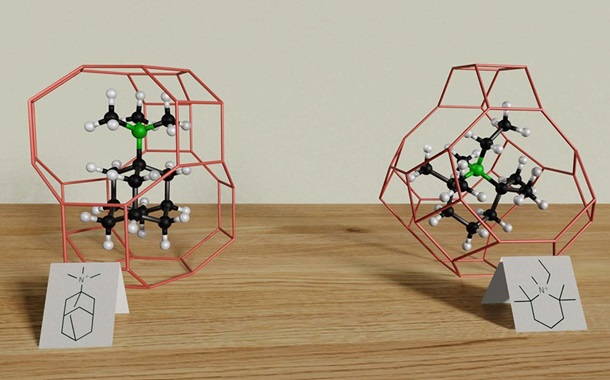Quasi-Viral Technologies as the Drivers of the Economy Digital Transformation Towards sustainability
Downloads
Doi:10.28991/HIJ-2025-06-01-013
Full Text:PDF
Downloads
Alam, S., Zhang, J., Shehzad, M. U., Boamah, F. A., & Wang, B. (2024). The inclusive analysis of green technology implementation impacts on employees age, job experience, and size in manufacturing firms: empirical assessment. Environment, Development and Sustainability, 26(2), 4467–4486. doi:10.1007/s10668-022-02891-6.
Razzaq, A., Wang, Y., Chupradit, S., Suksatan, W., & Shahzad, F. (2021). Asymmetric inter-linkages between green technology innovation and consumption-based carbon emissions in BRICS countries using quantile-on-quantile framework. Technology in Society, 66, 101656. doi:10.1016/j.techsoc.2021.101656.
Elmawazini, K., Chkir, I., Mrad, F., & Rjiba, H. (2022). Does green technology innovation matter to the cost of equity capital? Research in International Business and Finance, 62, 101735. doi:10.1016/j.ribaf.2022.101735.
Haldar, A., & Sethi, N. (2022). Environmental effects of Information and Communication Technology - Exploring the roles of renewable energy, innovation, trade and financial development. Renewable and Sustainable Energy Reviews, 153, 111754. doi:10.1016/j.rser.2021.111754.
Chen, C., Pinar, M., & Stengos, T. (2021). Determinants of renewable energy consumption: Importance of democratic institutions. Renewable Energy, 179, 75–83. doi:10.1016/j.renene.2021.07.030.
Melnyk, L. (2021). Socio-natural antientropic potential: the role of economy and innovations. Environment, Development and Sustainability, 23(3), 3520–3542. doi:10.1007/s10668-020-00730-0.
Bollaert, H., Lopez-de-Silanes, F., & Schwienbacher, A. (2021). Fintech and access to finance. Journal of Corporate Finance, 68, 101941. doi:10.1016/j.jcorpfin.2021.101941.
Bahoo, S., Cucculelli, M., & Qamar, D. (2023). Artificial intelligence and corporate innovation: A review and research agenda. Technological Forecasting and Social Change, 188, 122264. doi:10.1016/j.techfore.2022.122264.
Braun, E., & Wield, D. (1994). Regulation as a Means for the Social Control of Technology. Technology Analysis & Strategic Management, 6(3), 259–272. doi:10.1080/09537329408524171.
Asiaei, K., O'Connor, N. G., Barani, O., & Joshi, M. (2023). Green intellectual capital and ambidextrous green innovation: The impact on environmental performance. Business Strategy and the Environment, 32(1), 369–386. doi:10.1002/bse.3136.
Mohd Suki, N., Mohd Suki, N., Afshan, S., Sharif, A., Ariff Kasim, M., & Rosmaini Mohd Hanafi, S. (2022). How does green technology innovation affect green growth in ASEAN-6 countries? Evidence from advance panel estimations. Gondwana Research, 111, 165–173. doi:10.1016/j.gr.2022.06.019.
Zhu, C., Yue, J., & Chen, J. (2022). Green Product Development and Order Strategies for Retailers. Sustainability (Switzerland), 14(15), 9556. doi:10.3390/su14159556.
Behera, P., & Sethi, N. (2022). Nexus between environment regulation, FDI, and green technology innovation in OECD countries. Environmental Science and Pollution Research, 29(35), 52940–52953. doi:10.1007/s11356-022-19458-7.
Cai, X., Zhu, B., Zhang, H., Li, L., & Xie, M. (2020). Can direct environmental regulation promote green technology innovation in heavily polluting industries? Evidence from Chinese listed companies. Science of the Total Environment, 746, 140810. doi:10.1016/j.scitotenv.2020.140810.
Zhang, Y., Hu, H., Zhu, G., & You, D. (2023). The impact of environmental regulation on enterprises' green innovation under the constraint of external financing: evidence from China's industrial firms. Environmental Science and Pollution Research, 30(15), 42943–42964. doi:10.1007/s11356-022-18712-2.
Du, K., Cheng, Y., & Yao, X. (2021). Environmental regulation, green technology innovation, and industrial structure upgrading: The road to the green transformation of Chinese cities. Energy Economics, 98, 105247. doi:10.1016/j.eneco.2021.105247.
Lin, Z., Liang, D., & Li, S. (2022). Environmental Regulation and Green Technology Innovation: Evidence from China's Heavily Polluting Companies. Sustainability (Switzerland), 14(19), 12180. doi:10.3390/su141912180.
Lu, N., Wu, J., & Liu, Z. (2022). How Does Green Finance Reform Affect Enterprise Green Technology Innovation? Evidence from China. Sustainability (Switzerland), 14(16), 9865. doi:10.3390/su14169865.
Sharif, A., Kocak, S., Khan, H. H. A., Uzuner, G., & Tiwari, S. (2023). Demystifying the links between green technology innovation, economic growth, and environmental tax in ASEAN-6 countries: The dynamic role of green energy and green investment. Gondwana Research, 115, 98–106. doi:10.1016/j.gr.2022.11.010.
Sun, X., Tang, J., & Li, S. (2022). Promote Green Innovation in Manufacturing Enterprises in the Aspect of Government Subsidies in China. International Journal of Environmental Research and Public Health, 19(13), 7864. doi:10.3390/ijerph19137864.
Sánchez-Sellero, P., & Bataineh, M. J. (2022). How R&D cooperation, R&D expenditures, public funds and R&D intensity affect green innovation? Technology Analysis and Strategic Management, 34(9), 1095–1108. doi:10.1080/09537325.2021.1947490.
Zhao, J., Pongtornkulpanich, A., & Cheng, W. (2022). The Impact of Board Size on Green Innovation in China's Heavily Polluting Enterprises: The Mediating Role of Innovation Openness. Sustainability (Switzerland), 14(14), 8632. doi:10.3390/su14148632.
Zhao, Y., Peng, B., Elahi, E., & Wan, A. (2021). Does the extended producer responsibility system promote the green technological innovation of enterprises? An empirical study based on the difference-in-differences model. Journal of Cleaner Production, 319, 128631. doi:10.1016/j.jclepro.2021.128631.
Sharif, A., Saqib, N., Dong, K., & Khan, S. A. R. (2022). Nexus between green technology innovation, green financing, and CO2 emissions in the G7 countries: The moderating role of social globalization. Sustainable Development, 30(6), 1934–1946. doi:10.1002/sd.2360.
Obobisa, E. S., Chen, H., & Mensah, I. A. (2022). The impact of green technological innovation and institutional quality on CO2 emissions in African countries. Technological Forecasting and Social Change, 180, 121670. doi:10.1016/j.techfore.2022.121670.
Habiba, U., Xinbang, C., & Anwar, A. (2022). Do green technology innovations, financial development, and renewable energy use help to curb carbon emissions? Renewable Energy, 193, 1082–1093. doi:10.1016/j.renene.2022.05.084.
Drake, G. W. F. (2025). Entropy. Definition & Equation. Encyclopí¦dia Britannica, Inc. Edinburgh, United Kingdom. Available online: https://www.britannica.com/science/entropy-physics (accessed on January 2025).
Johnson, G.J. (2018). A Dictionary of Science (7th Edition). Reference Reviews, 32(2), 19-19. doi:10.1108/rr-08-2017-0181.
Clark, D. K. (1860). The mechanical theory of heat. Journal of the Franklin Institute, 70(3), 163–169. doi:10.1016/0016-0032(60)90150-2.
Boltzmann, L. (1974). The Second Law of Thermodynamics. Theoretical Physics and Philosophical Problems. Springer Netherlands. doi:10.1007/978-94-010-2091-6_2.
Thomson, W. (1852). XLVII. On a universal tendency in nature to the dissipation of mechanical energy. The London, Edinburgh, and Dublin Philosophical Magazine and Journal of Science, 4(25), 304–306. doi:10.1080/14786445208647126.
da Silva, S. L. L., & da Mata, A. S. (2021). What is life? The Physical Aspect of the Living Cell by Erwin Schrödinger. Cambridge University Press, Cambridge, United States. doi:10.1590/1806-9126-RBEF-2020-0527.
Ecotechnica (2024). Home solar stations in Ukraine: New statistics for the beginning of 2020. Available online: https://ecotechnica.com.ua/uk/energy/solntse/domashnie-solnechnye-stantsii-v-ukraine-novaya-statistika-na-nachalo-2020-goda (accessed on January 2025).
Statistica. (2022). Unique mobile subscribers worldwide by region 2010-2025. Statista. Available online: https://www.statista.com/statistics/740154/worldwide-unique-mobile-subscribers-by-region/ (accessed on January 2025).
PR Newswire (2024). Worldwide Personal Computers Industry to 2030”Major Players Include Dell, Lenovo Group and Acer Among Others. Available online: https://www.prnewswire.com/news-releases/worldwide-personal-computers-industry-to-2030---major-players-include-dell-lenovo-group-and-acer-among-others-301318261.html (accessed on January 2025).
Petrosyan, A. (2024). Internet and social media users in the world 2024. Statista. Available online: https://www.statista.com/statistics/617136/digital-population-worldwide/ (accessed on January 2025).
Singleton, M. (2024). Mark Zuckerberg wants Facebook to have 5 billion users by 2030. The Verge. Available online: https://www.theverge.com/2016/2/4/10918680/5-billion-facebook-users-by-2030-mark-zuckerberg (accessed on January 2025).
Hill, J. S. (2016). Renewable Energy Now Accounts For 30% Of Global Power Generation Capacity. CleanTechnica. Available online: https://cleantechnica.com/2016/09/20/renewable-energy-now-accounts-30-global-power-generation-capacity/ (accessed on January 2025).
IEA. (2019). Modern renewables in SDG7: Data and Projections. International Energy Agency, Paris, France. Available online: https://www.iea.org/reports/sdg7-data-and-projections/modern-renewables#abstract (accessed on January 2025).
Tu, Y. X., Kubatko, O., Piven, V., Sotnyk, I., & Kurbatova, T. (2022). Determinants of Renewable Energy Development: Evidence from the EU Countries. Energies, 15(19), 7093. doi:10.3390/en15197093.
IRENA. (2019). Renewable Power Generation Costs in 2018. International Renewable Energy Agency, Masdar City, United Arab Emirates. Available online: https://www.irena.org/publications/2019/May/Renewable-power-generation-costs-in-2018 (accessed on January 2025).
McCartny, R., & Xu, L. (2020). WoodMac: Global Energy Storage Capacity to Hit 741GWh by 2023. A Wood Mackenzie Business. Available online: https://www.greentechmedia.com/articles/read/woodmac-global-storage-to-reach-741-gigawatt-hours-by-2030 (accessed on January 2025).
Proctor, D. (2021). Group Forecasts Massive Increase in Energy Storage by 2030. POWER Magazine. Available online: https://www.powermag.com/group-forecasts-massive-increase-in-energy-storage-by-2030/ (accessed on January 2025).
Ambrose, J. (2021). Electric vehicles on world's roads expected to increase to 145m by 2030 | Electric, hybrid and low-emission cars. The Guardian. Available online: https://www.theguardian.com/environment/2021/apr/29/electric-vehicles-on-worlds-roads-expected-to-increase-to-145m-by-2030 (accessed on January 2025).
Mörée, G., & Leijon, M. (2022). Overview of Hybrid Excitation in Electrical Machines. Energies, 15(19), 7254. doi:10.3390/en15197254.
Alsop, T. (2022). 3D printing & additive manufacturing devices 2030. Statista. Available online: https://www.statista.com/statistics/1259618/3d-printing-and-additive-manufacturing-devices-worldwide/ (accessed on January 2025).
Amelia H. (2021). Wohlers Report 2021: Weakened Growth for Additive Manufacturing. (2021). 3Dnatives. Available online: https://www.3dnatives.com/en/wohlers-report-2021-180320214/ (accessed on January 2025).
Markovič, M. P., Cingesar, I. K., Keran, L., Prlič, D., Grčič, I., & Vrsaljko, D. (2022). Thermal and Mechanical Characterization of the New Functional Composites Used for 3D Printing of Static Mixers. Materials, 15(19), 6713. doi:10.3390/ma15196713.
BBC. (2019). Robots to replace up to 20 million factory jobs by 2030. BBC News. Available online: https://www.bbc.com/news/business-48760799 (accessed on January 2025).
Krot, K., Iskierka, G., Poskart, B., & Gola, A. (2022). Predictive Monitoring System for Autonomous Mobile Robots Battery Management Using the Industrial Internet of Things Technology. Materials, 15(19), 6561. doi:10.3390/ma15196561.
DiChristina, M., & Meyerson, B. S. (2017). Top 10 Emerging Technologies of 2017. Scientific American, 317(6), 28–39. doi:10.1038/scientificamerican1217-28.
Duggal, N. (2023). Top 18 New Trends in Technology for 2023. Simplilearn. Available online: https://www.simplilearn.com/top-technology-trends-and-jobs-article (accessed on January 2025).
Nguyen, T. (2023). 4 Emerging Technologies You Need to Know About. Gartner. Available online: https://www.gartner.com/en/articles/4-emerging-technologies-you-need-to-know-about (accessed on January 2025).
Kemp, S. (2020). We are social, Digital 2020: 3.8 billion people use social media. We Are Social Ltd. Available online: https://wearesocial.com/uk/blog/2020/01/digital-2020-3-8-billion-people-use-social-media/ (accessed on January 2025).
Gackenbach, J., & Bown, J. (Eds.). (2017). Boundaries of self and reality online: implications of digitally constructed realities. Academic Press, London, United Kingdom.
Leiner, B. M., Cerf, V. G., Clark, D. D., Kahn, R. E., Kleinrock, L., Lynch, D. C., Postel, J., Roberts, L. G., & Wolff, S. (2009). A brief history of the internet. ACM SIGCOMM Computer Communication Review, 39(5), 22–31. doi:10.1145/1629607.1629613.
Cooper, M., Dronsuth, R. W., Leitich, A. J., Lynk, J. C. N., Mikulski, J. J., Mitchell, J. F., Richardson, R. A., & Sangster, J. H. (1975). Radio telephone system. United States Patent No. US3906166A. Available online: https://patents.google.com/patent/US3906166A/en / (accessed on January 2025).
Shao, G. (2019). The future of connectivity: Introducing Wi-Fi 6. The CNBC News. Available online: https://www.cnbc.com/2019/06/27/what-is-wi-fi-6.html (accessed on January 2025).
Labiod, H., Afifi, H., & De Santis, C. (2007). Wi-Fi TM, Bluetooth TM, ZigBee TM and WiMax TM. Springer Netherlands. doi:10.1007/978-1-4020-5397-9.
Xu, X., Wei, Z., Ji, Q., Wang, C., & Gao, G. (2019). Global renewable energy development: Influencing factors, trend predictions and countermeasures. Resources Policy, 63, 101470. doi:10.1016/j.resourpol.2019.101470.
Sí¸rensen, B. (1991). A history of renewable energy technology. Energy Policy, 19(1), 8–12. doi:10.1016/0301-4215(91)90072-V.
Sculpteo (2024). The State of 3D Printing. Discover the largest study of the Additive Manufacturing industry. Sculpteo. Available online: https://info.sculpteo.com/the-state-of-3d-printing-report (accessed on January 2025).
Liang, K., Carmone, S., Brambilla, D., & Leroux, J. C. (2018). 3D printing of a wearable personalized oral delivery device: A first-in-human study. Science Advances, 4(5), 2544. doi:10.1126/sciadv.aat2544.
Accenture. (2019). Technology Vision 2019. The post-digital era is upon us: Are you ready for what's next? Accenture. Available online: https://www.accenture.com/content/dam/accenture/final/a-com-migration/r3-additional-pages-1/pdf/pdf-94/accenture-techvision-2019-exec-summary.pdf (accessed on January 2025).
Keiser, B. E., & Strange, E. (1985). Evolution of the Integrated Services Digital Network (ISDN). Digital Telephony and Network Integration. Springer Netherlands. doi:10.1007/978-94-015-7177-7_14.
Zhang, Y. (2019). Research on key technologies of remote design of mechanical products based on artificial intelligence. Journal of Visual Communication and Image Representation, 60, 250–257. doi:10.1016/j.jvcir.2019.02.010.
Colmerauer, A., & Roussel, P. (1996). The birth of Prolog. History of Programming Languages II, 331–367. doi:10.1145/234286.1057820.
He, X., Ai, Q., Qiu, R. C., Huang, W., Piao, L., & Liu, H. (2017). A Big Data Architecture Design for Smart Grids Based on Random Matrix Theory. IEEE Transactions on Smart Grid, 8(2), 674–686. doi:10.1109/TSG.2015.2445828.
Chen, S., Zhong, S., Yang, S., & Wang, X. (2016). A Multiantenna RFID Reader with Blind Adaptive Beamforming. IEEE Internet of Things Journal, 3(6), 986–996. doi:10.1109/JIOT.2016.2542242.
Kaplan, E. D., & Hegarty, C. (2017). Understanding GPS/GNSS: principles and applications. Artech House, Massachusetts, United States.
Chekov, A. (2019). The development of a new generation GPS system has been completed in the USA. Available online: https://iz.ru/927626/2019-10-01/v-ssha-zavershena-razrabotka-sistemy-gps-novogo-pokoleniia (accessed on January 2025).
MusiaŠ‚, M. (2019). Enchanting Robots: Intimacy, Magic, and Technology. Springer Nature Switzerland. doi:10.1007/978-3-030-12579-0.
Yang, G. Z. (2017). Digital architecture and robotic construction. Science Robotics, 2(5), 3673. doi:10.1126/scirobotics.aan3673.
McLaughlin, M. L. (1996). The art site on the World Wide Web. Journal of Computer-Mediated Communication, 1(4), JCMC146. doi:10.1111/j.1083-6101.1996.tb00175.x.
Marinescu, D. C. (2013). Cloud computing: Theory and practice. Morgan Kaufmann, Massachusetts, United States.
Duarte, F. (2023). Amount of Data Created Daily 2024. Exploding Topics is a Trademark of Semrush Inc. Available online: https://explodingtopics.com/blog/data-generated-per-day (accessed on January 2025).
- This work (including HTML and PDF Files) is licensed under a Creative Commons Attribution 4.0 International License.





















